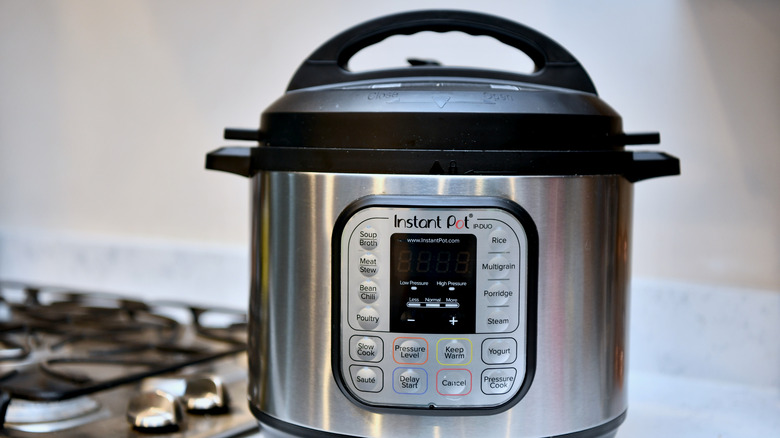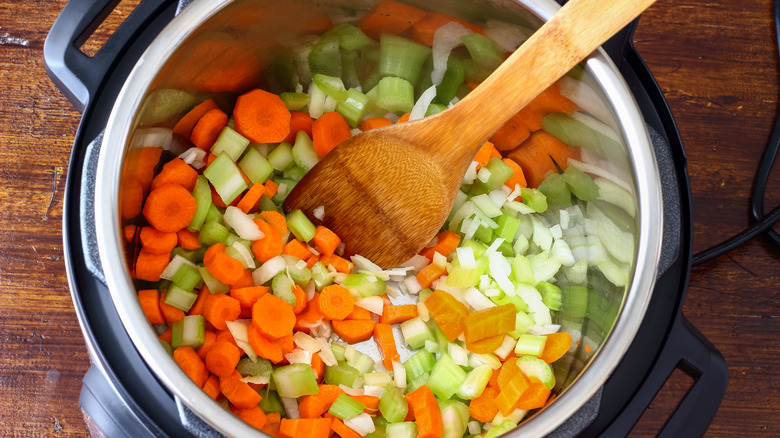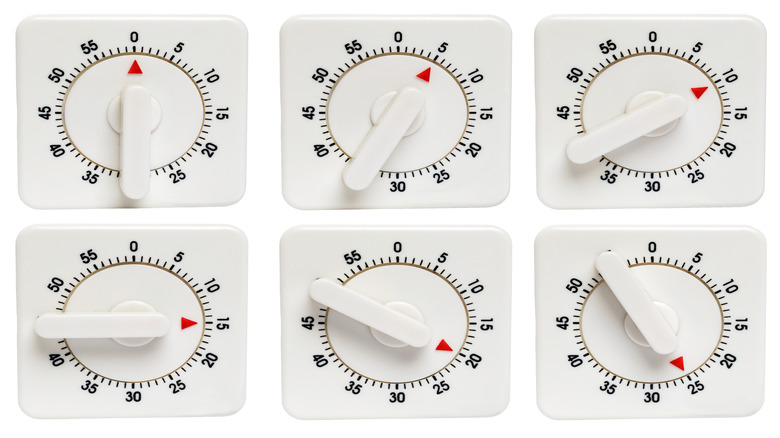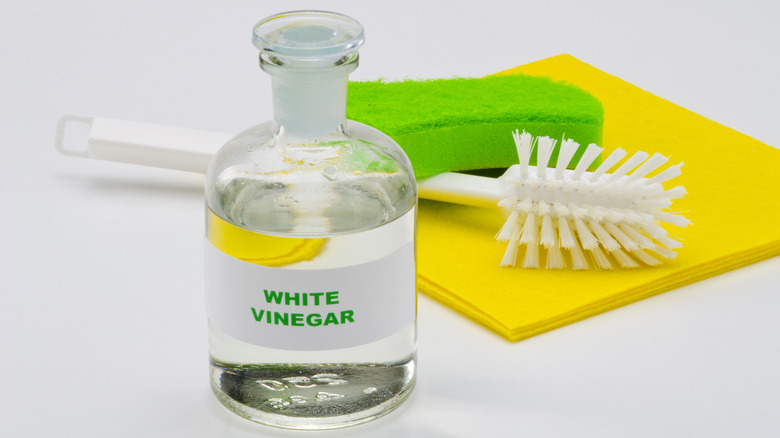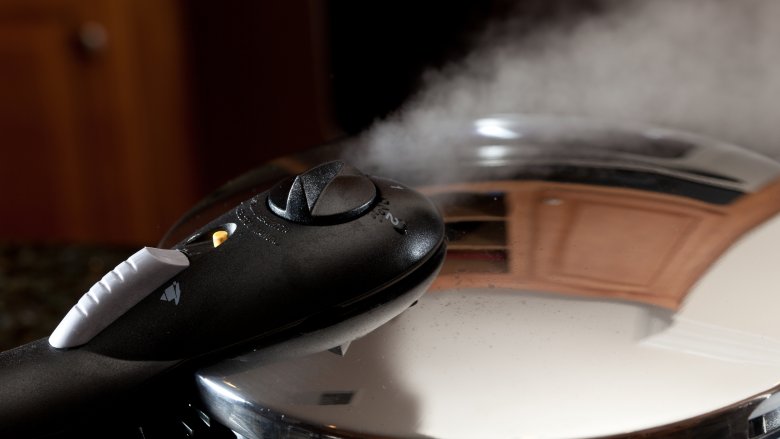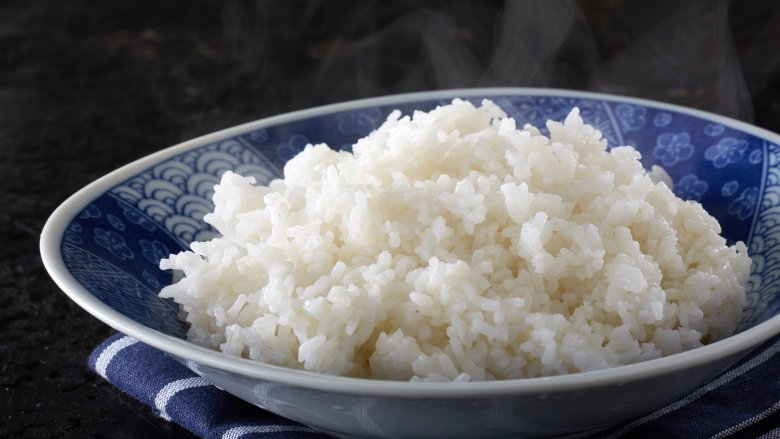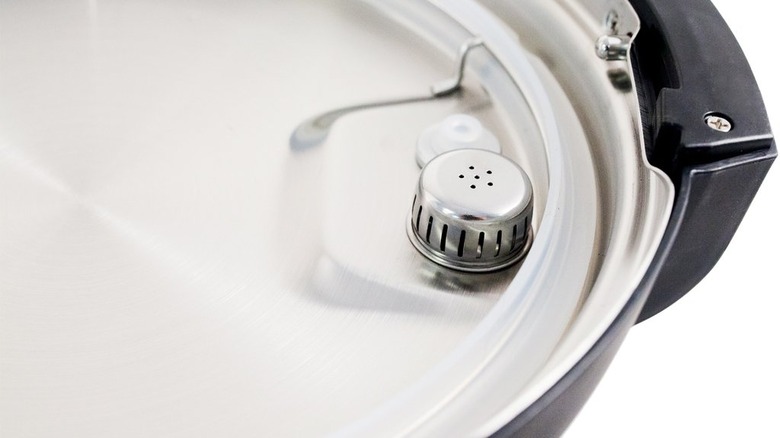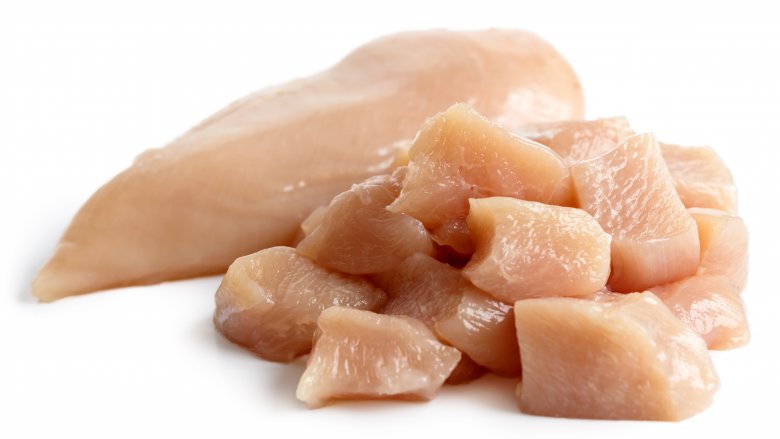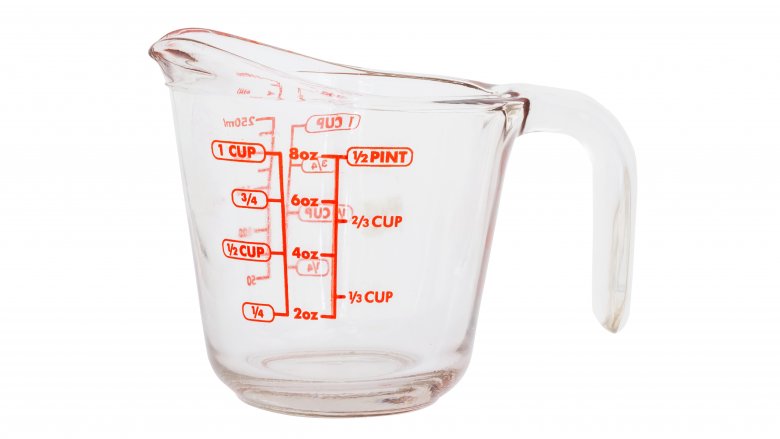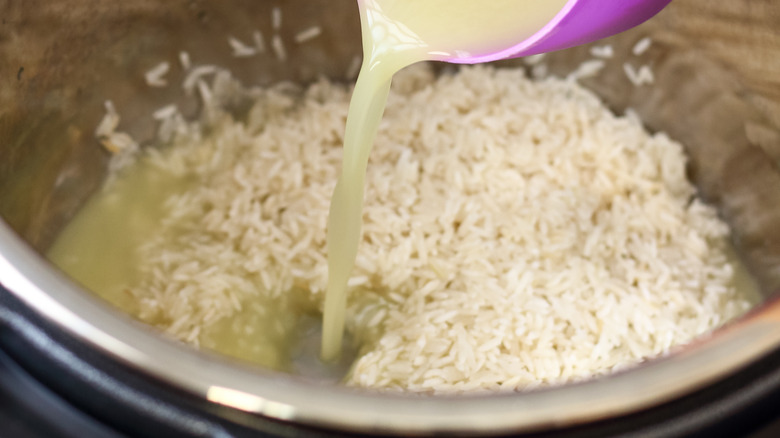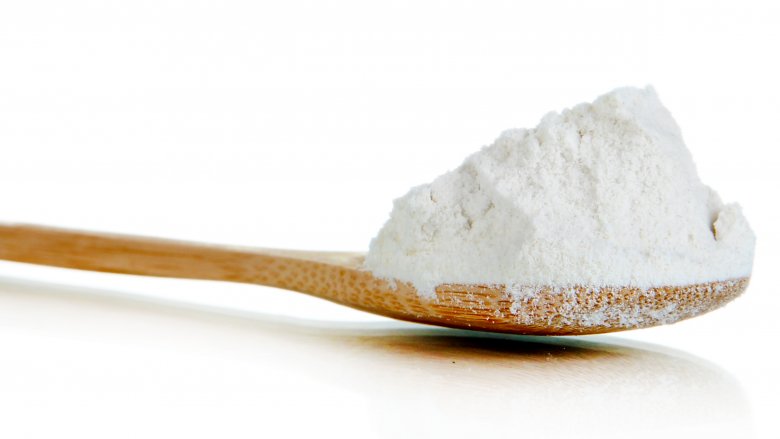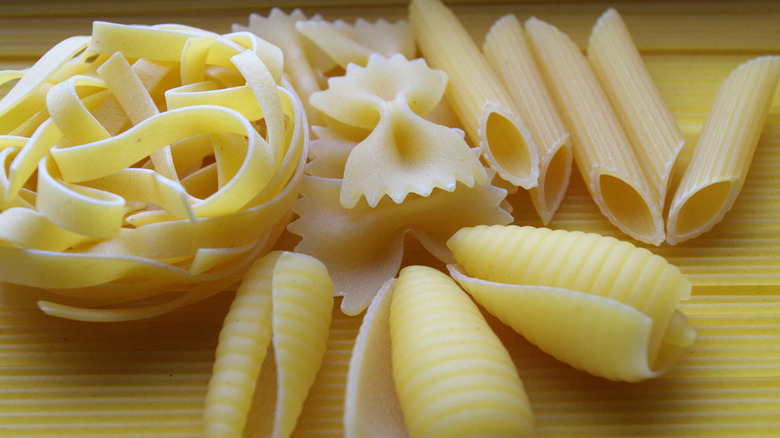Mistakes You're Making With Your Instant Pot
We may receive a commission on purchases made from links.
The Instant Pot has taken the world by storm, and successfully reintroduced pressure cooking into our everyday lives. This useful appliance now has a permanent spot on our counters, and helps us make dinner in a fraction of the time compared to ovens and slow cookers.
But for all the fall-off-the-bone chicken or super-fast macaroni and cheese you've been making, do you know if you're really using your newest small appliance to its fullest potential? Make sure you're not making these mistakes when cooking with the Instant Pot.
You're not taking advantage of the sauté feature
One-pot meals are a busy cook's best friend, and if you're not using the sauté button on your Instant Pot, you're missing an opportunity. If your recipe calls for browning meat, pre-cooking onions, or doing any prep work on the stovetop, you can do that right in your Instant Pot. Sauté the ingredients in the bottom of the pot with oil or whatever fat you normally would, then continue on with the recipe by switching to the pressure cooker feature. One less pan to clean!
You're underestimating the time a recipe takes
Yes, the Instant Pot is fast, but you might be a little disappointed when the mac and cheese recipe that promises to cook in five minutes takes longer than five minutes. This is because the time needed for the machine to come to pressure isn't taken into account — but there is a way to shave a few minutes off the process. Just turn on your Instant Pot right as you begin your recipe, even if you're not ready to close the lid yet. Make sure you have whatever cooking liquid in so you're not heating an empty pot, then finish the remaining prep. The pot will start to heat up while you're working, and won't have to start from cold once you do close the lid. Now you're that much closer to cheesy pasta goodness.
You're slow cooking on low
The miraculous Instant Pot also moonlights as a slow cooker, but you won't get very far if you're using the "low" setting for your beef stew. Because "low" (or "less") is more comparable to the "keep warm" function on your slow cooker, you can imagine that your meat will still be about as raw as when it went in, even after hours of cook time. Use the "normal" (or "medium") setting for a true slow cooker "low," and the "more" (or "high") setting for "high." Or scrap the raw beef stew and opt for plan B: steak tartare.
You're not cleaning the sealing ring
If you notice a less-than-pleasant odor emanating from your Instant Pot, chances are it's the sealing ring. Strong foods can infuse the silicone ring, and after a few meals it's bound to take on a gross combination of smells. But before you toss it in the trash, try this method to clean it: Pour two cups of white vinegar into the pot, close the lid, then run it for two minutes on the "steam" setting. Remove the ring and let it dry before reinstalling. It should now be (mostly) odor-free.
Or replacing the sealing ring
If you haven't been keeping up with the cleaning process and your ring is a smelly lost cause, it's probably time to replace it. Aside from odors, you should also keep an eye on its integrity — cracks or other damage can lead to leaks. Thankfully, the sealing rings are inexpensive and, as of February 2018, won't set you back more than $9 (depending on size).
Note that rings sold by unauthorized dealers have not been tested or certified by Instant Pot, and according to their website, "the use of third party sealing rings may have unexpected effects on your product, and would void the Instant Pot warranty."
You're storing the lid on the pot
One more way to combat the stinky sealing ring: Store the lid upside down on the pot rather than seated and sealed, allowing the ring to air out while not in use. Easy peasy, right?
You're overfilling it
As tempting as it is to make a month's worth of meals all at once, you can push your Instant Pot too far when it comes to capacity. According to the user's manual, you shouldn't fill the pot more than 2/3 full when using pressure cooking programs, or more than 1/2 full when cooking foods that expand in volume, like rice or beans. Doing so runs the risk of the contents clogging the pressure release valve, which we can only assume leads to bad things.
You're not making foil handles for the trivet
Sticking your hands in the hot Instant Pot to fish out the trivet can be a dangerous task, but this useful hack lessens the risk considerably. All you need is some foil, and boom, you've got handles. Simply loop folded foil through the handles and lay them inside the Instant Pot, over the food, as it cooks. When you're done cooking, use the handles to remove the trivet (and whatever food is on the trivet) without burning your fingers.
You're not stacking foods
Another way to take advantage of one-pot cooking with the Instant Pot is to stack different foods within the machine. For instance, while your meat is cooking away in the bottom of the pot, you can cook potatoes or steam vegetables over top. You'll need a rack that fits into your machine, but then it's as simple as placing a steamer basket or other pressure cooker-safe vessel on top of the rack. If whatever you're steaming will cook faster than the other food, you'll want to add it in later by depressurizing and restarting.
You always use quick release
We're all in a hurry to get dinner on the table, but sometimes using the quick pressure release function isn't the best option. According to Instant Pot, "Quick Release is not suitable for food with large liquid volume or high starch content (e.g. porridge, congee, sticky liquids, soup, etc.). Food content may splatter out from the pressure release." They do recommend using quick release for quick-cooking vegetables and delicate seafood, since the cooking is more immediately stopped. Moral of the story: If you don't use natural release, maybe keep a sponge nearby.
You're not using it as a rice cooker
Yes, your new favorite appliance makes perfect rice, too. (Plus, by ditching your rice cooker you'll have room in your kitchen to store the Instant Pot.) It's as simple as a 1:1 rice to water ratio. Rinse the rice, add to the pot with water, and press the "rice" button. (Use this method for white rice only). Let the cooked rice sit for about 10 minutes before opening. Just as easy as the ol' rice cooker, right?
But when you do, you only use the rice button
The "rice" button will only get you so far — don't ignore the "multigrain" button on your Instant Pot. You'll need to use it (or "manual") for brown or wild rice, but the cooking times will vary because unlike the rice feature, the multigrain feature is not automatic. Unlike cooking these types of rice on the stove, the rice to water ratio remains 1:1. According to Instant Pot, that's due to the pressure cooker's nearly non-existent water evaporation — which also makes it super easy to remember the "recipe." You'll just need to adjust the cook time to 22-28 minutes for brown rice, and 25-30 minutes for wild rice.
You're not cleaning the anti-block shield
If you've never pulled off the anti-block shield located on the underside of the Instant Pot lid, stop what you're doing and clean it now. This component should be removed and cleaned with every use (definitely in the case of excess food splatter), to avoid clogging and blocking the vent with debris. A clogged vent is not a pressure cooker's friend.
You're doubling the recipe wrong
A pressure cooker doesn't care how much meat is in the pot, but it does care how big those pieces of meat are. So if you're doubling a recipe but the pieces are the same size the recipe calls for, the cook time should stay the same, no increase necessary. However, if you're changing a recipe from cubed chicken to a whole breasts, you'll need to adjust. The Instant Pot is good, but it's not magical.
You're not using enough liquid
You might think using less liquid can trick the Instant Pot into cooking faster, but no dice. The machine needs a certain amount of liquid to come to pressure, and according to Instant Pot that amount is 1 cup, minimum. Fill it with less than that and you're going to be waiting a long time.
You're using too much liquid
At the risk of sounding like a page out of Goldilocks and the Three Bears, there is a just right amount of liquid needed to cook in your Instant Pot. We've already established the minimum, but you also need to be careful not to use too much liquid. Because of the lack of water evaporation, sauces don't reduce as they would on a stovetop, and therefore flavors won't concentrate, resulting in bland, thin sauces. Follow the recipe — this is definitely a time when more isn't always better.
You're adding thickeners too soon
Because of that lack of water evaporation, you might find that you need to thicken your finished dish, even if you didn't use too much liquid. This should always be done after cooking as the thickened liquid can cause a loss of steam, which slows the overall cooking process. One option is to turn the machine to "sauté" once the pressure cooking is finished, then stir in your thickening agent (like a cornstarch slurry) and simmer to desired consistency.
You're doing pasta all wrong
Yes, surprisingly, you can cook pasta successfully in a pressure cooker, but there are two things to keep in mind:
- Skip thin, small pasta like angel hair or pastina, which will turn to mush. Go for heartier varieties, like penne or rigatoni.
- Don't be tempted to stir the pasta into the other ingredients. You'll want to add your sauce and any cooking liquid first, then add the pasta on top. This prevents it from sticking to the bottom of the pot.
You're now officially an Instant Pot pasta pro.
